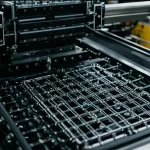Impact of UK Cooking Techniques on International Dishes
UK cooking techniques have long influenced global cuisine integration, enriching dishes worldwide with their distinctive flair. Traditional British methods such as roasting, poaching, and baking have crossed borders, enhancing international recipes with their unique qualities. For example, roasting in the UK often involves slow, even cooking that intensifies flavours and tenderises meats, a technique increasingly adopted in global kitchens from North America to Asia. Similarly, poaching—gently cooking food in simmering liquid—offers a subtle, moist texture beneficial in delicate seafood or poultry dishes across various culinary traditions.
Baking, another cornerstone of UK cooking techniques, extends beyond bread and pies. Its application in crusty pastries or gratins influences international dishes by combining crispy textures with rich interiors. These traditional methods facilitate global cuisine integration by blending British culinary precision with diverse ingredients and spices.
Also read : What are the must-try recipes for a classic Cornish pasty?
Fusion cuisine benefits significantly from this integration. British culinary practices often provide a structural foundation for experimentation, allowing chefs to merge classic UK cooking with exotic flavours seamlessly. This approach results in creative dishes that respect tradition while embracing modern global tastes, exemplifying the dynamic role UK cooking techniques play in today’s international culinary landscape.
Enhancing Flavour and Texture in World Cuisines
Traditional British methods such as roasting, baking, simmering, and stewing contribute significantly to flavour development and texture improvement in global dishes. Roasting, a hallmark of UK cooking techniques, uses slow, dry heat to caramelise natural sugars in meats and vegetables, creating deep, complex flavours often unmatched by quicker international methods like grilling. Baking adds a crisp outer layer while preserving moisture inside, providing a satisfying contrast in texture; this is especially beneficial in pastries and casseroles across various cuisines.
Topic to read : What are the secrets to perfect Yorkshire pudding?
Simmering and stewing introduce gradual, gentle cooking in liquid, allowing flavours to meld and meats to tenderise thoroughly. Compared to common boiling or frying worldwide, these British simmering methods offer a refined approach to texture improvement, resulting in tender, juicy outcomes without toughness or dryness.
Applying UK cooking techniques enhances culinary enhancement by layering taste profiles and optimizing mouthfeel. For example, integrating British roasting into a Mediterranean lamb dish can elevate the overall flavour depth, while using poaching methods for seafood improves moistness and delicacy compared to sautéing. These techniques demonstrate that informed global cuisine integration through UK culinary practices leads to dishes with superior taste and texture.
Practical Applications and Integration Tips
Incorporating UK cooking techniques into global recipes enriches dishes with distinctive textures and flavours. For successful global recipe adaptation, start by identifying components suited to traditional British methods like roasting or poaching. For example, roasting vegetables or meats slowly at moderate heat adds depth and caramelisation often missing from quicker methods.
Home cooks should embrace simple adjustments: substitute frying with poaching for delicate proteins such as fish, preserving moistness and tenderness. Baking can be used beyond bread, creating crisp textures in diverse cuisines, such as baked Mediterranean vegetable gratins or Asian-inspired casseroles. Professionals benefit from mastering layering techniques common in British stew preparations, where slow simmering melds spices and ingredients evenly without overpowering subtle flavours.
Practical tips include controlling temperature carefully during roasting to avoid dryness and using broth or wine in poaching liquids for added aroma. Experimentation encourages UK food inspiration by blending these techniques with local spices and ingredients, leading to innovative fusion dishes.
For instance, adapting a traditional Indian curry by roasting the meat before simmering intensifies flavour complexity. Similarly, poaching seafood in herb-infused liquids exemplifies the synergy of British cooking practices within international contexts, offering both culinary enhancement and approachable methods for varied skill levels.
Professional Insights and Real-World Examples
Gaining chef advice on UK cooking techniques reveals their growing value in international kitchens. Many culinary experts recognise that traditional British methods like roasting and poaching offer reliable ways to develop depth and texture in diverse dishes. Chefs often highlight roasting for its ability to caramelise and intensify flavour, making it a favourite when preparing proteins or vegetables from various cuisines. Poaching’s gentle heat maintains moisture and delicacy, especially for seafood, which aligns with many chefs’ emphasis on preserving ingredient integrity.
Culinary fusion case studies demonstrate how UK-inspired practices transform global recipes. For example, a fusion dish combining British roasting with Asian spices creates layers of taste that neither cuisine achieves alone. Similarly, a French-inspired stew using British slow-simmering methods allows spices and meats to meld harmoniously without overpowering subtle notes. These case studies validate the versatility of traditional British methods in enhancing flavour and texture internationally.
Experts recommend thoughtful adaptation rather than strict imitation. They advise starting with UK-inspired fusion basics—like substituting frying for baking—to explore new textures and flavour profiles creatively. Professionals also stress balancing traditional British techniques with local ingredients to maintain authenticity while encouraging innovation in global culinary scenes.





